US PMI Manufacturing rose to record high at 62.6, up from 62.1. PMI Services dropped to 64.8, down from 70.4. PMI Composite dropped to 63.9, down from 68.7.
Chris Williamson, Chief Business Economist at IHS Markit, said:
“The early PMI indicators point to further impressive growth of the US economy in June, rounding off an unprecedented growth spurt over the second quarter as a whole.
“While both output growth and inflows of new orders have come off their peaks in both manufacturing and services, this is as much due to capacity constraints limiting firms’ abilities to cope with demand rather than any cooling of the economy.
“Although price gauges have also slipped from May’s all-time highs, it’s clear that the economy continues to run very hot. Prices charged for goods and services are still rising very sharply, record supply shortages are getting worse rather than better, firms are fighting to fill vacancies and manufacturers’ warehouse stocks are being depleted at a worrying rate as firms struggle to meet demand.
“While the second quarter will likely represent a peaking in the pace of economic growth, a concomitant peaking of inflation is far less assured.”




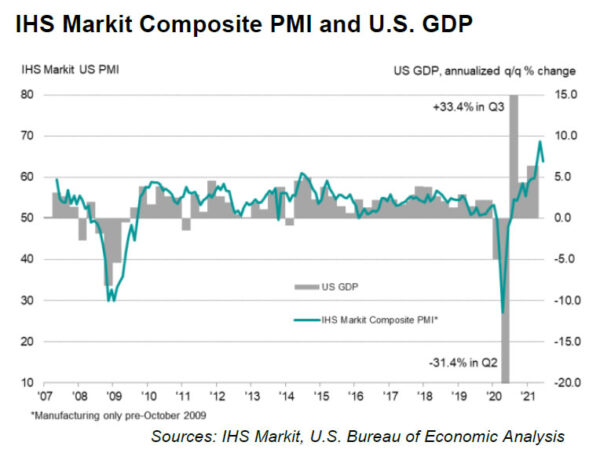
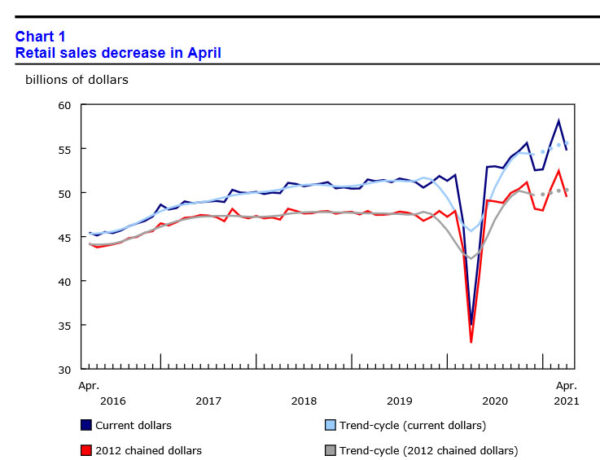
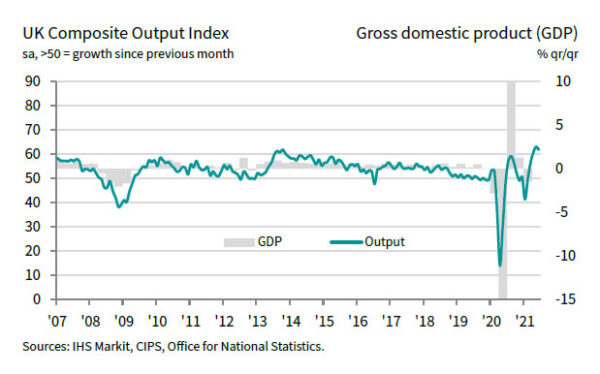
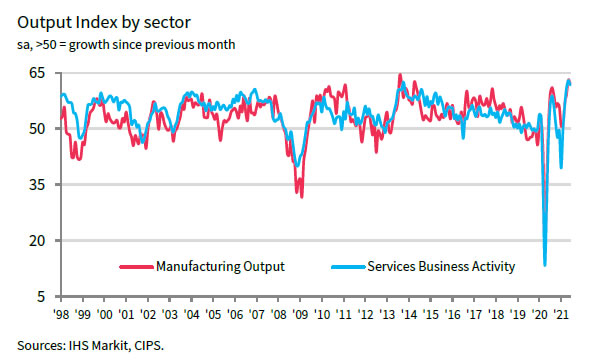
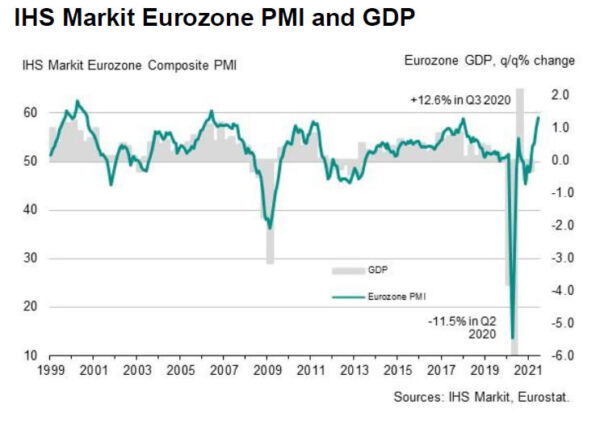
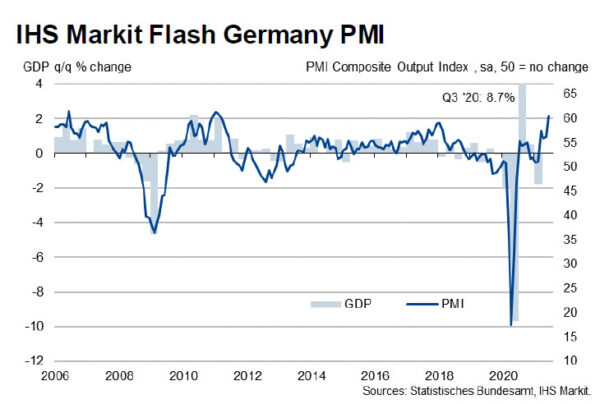
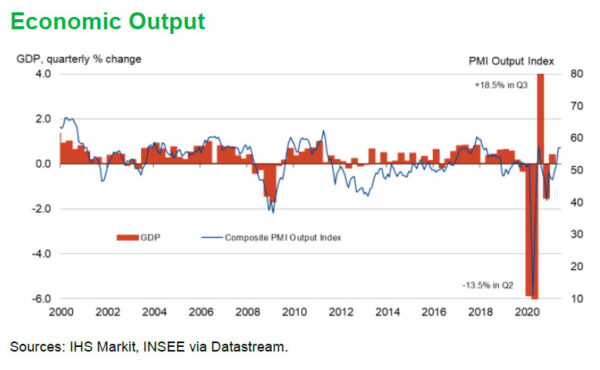
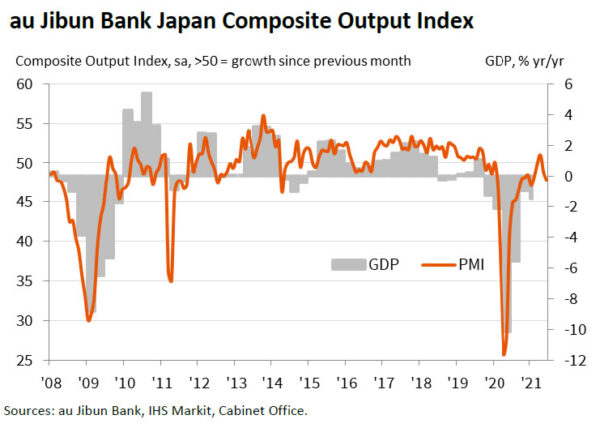
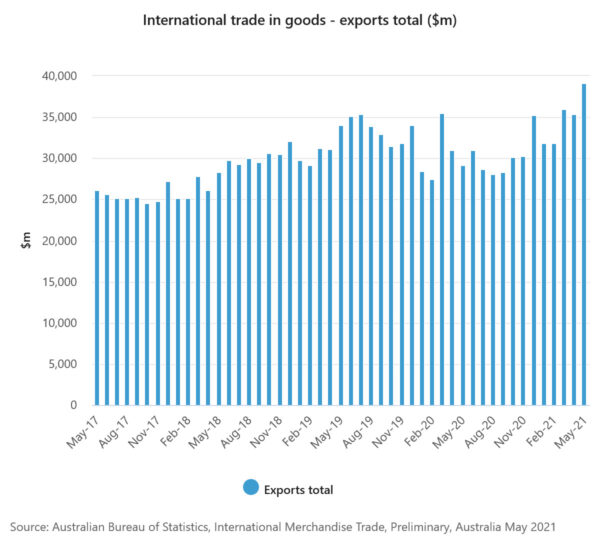
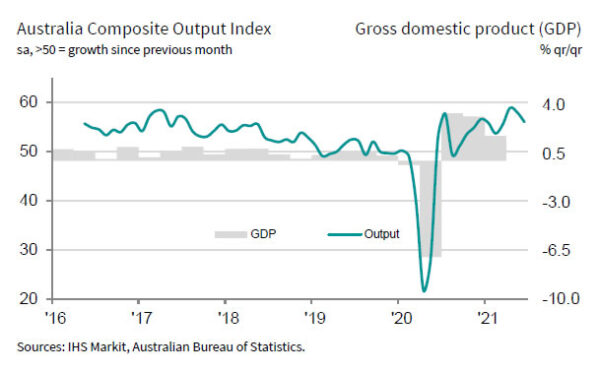


Fed Bowman: Rise in inflation more than just measurement issues
Fed Governor Michelle Bowman said in a speech, “as the recovery in the labor market and spending on goods and services continues to gain momentum, we are seeing upward pressures on consumer prices.”
“This rise has reflected, in part, the fact that inflation numbers at the onset of the pandemic were very low,” she added. “But there is more to the recent rise in inflation than just these measurement issues.”
“The impressive upswing in economic activity has played an important role as it has led to a number of supply chain bottlenecks and put upward pressure on prices for many goods,” she said. “These upward price pressures may ease as the bottlenecks are worked out, but it could take some time, and I will continue to monitor the situation closely and will adjust my outlook as needed.”
Full speech here.